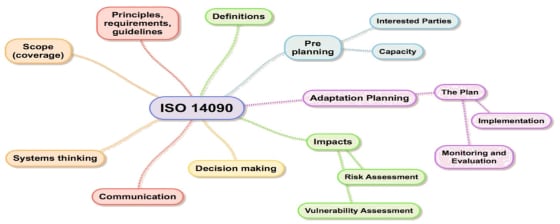What organizations should be doing now in response to climate change

A growing number of organizations are now actively planning for the impacts of climate change. In response, a new British standard is providing an approach to climate change adaptation. this blog post examines what it has to say.
There is now no doubt that the climate is changing. The extent of future climate change will depend on the effectiveness of efforts to limit further emissions of greenhouse gases. Notwithstanding, the impacts of climate change will still be with us for decades to come. As a result, organizations will have to understand the associated risks of climate change impacts and take action.
Organizational impacts can be physical, financial, regulatory and reputational, and can be direct and indirect. Organizations of all sizes and types, all over the world, are focused on adaptation as a way to reduce the threats of climate change and identify any resulting opportunities. To support organizations, BSI and ISO have created BS EN ISO 14090 Adaptation to Climate Change – Principles, requirements and guidelines, the world’s first international standard on climate adaptation.
Developing and prioritizing adaptation actions
BS EN ISO 14090 describes principles, requirements and guidelines for adaptation to climate change. These include integrating adaptation within or across organizations. The standard helps organizations to identify and understand impacts and uncertainties and how these can be used to inform decisions. And it helps them to report adaptation actions too. The standard can be used by any organization whose activities, products and services might be at risk from, or in some cases able to take advantage of, climate change.
The document aims to help organizations prioritize and develop effective, efficient and deliverable adaptation plans tailored to the specific climate challenges they face. The approach enables organizations to consider adaptation when designing and implementing policies, strategies, plans, and actions. It sets out a consistent, structured and pragmatic approach to preventing or minimizing the harm that climate change could cause.
A flexible approach
To ensure choice and flexibility, the content of the standard is pitched at a high level allowing activities to be tailored to the needs of the organization. The purposely non-linear nature of the standard’s approach allows organizations to adopt its structure no matter what stage they are at in their adaptation activities - from those just starting out, to those already engaged in adaptation, to those choosing to lead the way.

Reproduced with kind permission from John Dora Consulting Limited
www.jdcl.eu © John Dora Consulting 2019
The above diagram shows the key themes of the standard. Organizations might find themselves moving back and forth between the multiple elements of the standard, depending upon the challenges they face and the lessons they learn from delivery experience.
The approach within the document is iterative and supports continuous learning and improvement processes aimed at all scales of organization – from local to multinational. It can be used by those in public, private and third sectors and single, small and medium-size enterprises. The standard is useful for achieving incremental improvement goals to major, transformative objectives.
The structure is however logical, iterative and designed to be applied into the future.
The benefits – from reporting to resilience
A primary benefit of the standard will be its impact on organizational resilience, improving risk management of climate impacts.
The standard also provides a robust framework within which to execute replicable and comparable adaptation planning. Designed to help organizations develop measures and report on adaptation activity in a verifiable way, BS EN ISO 14090 can demonstrate good practice and help organizations meet their SDG goals on climate actions.
BS EN ISO 14090 is not just useful for those implementing climate actions – it is relevant to individuals and organizations across the value chain. It is also useful for decision-making in purchasing, investment and insurance decision-makers where it’s important to understand an organization’s climate change adaptations (their own organization or others).
The requirements around documentation of activities – from planning to monitoring and evaluation – facilitate a strong reporting framework for organizations who have obligatory or voluntary reporting needs.
Integrated into business processes
This is ISO’s first standard on climate adaptation and is written in such a way as to be integrated into current business practices and priorities. This includes carrying out climate change adaptation activities in parallel with, or integrated with, climate change mitigation activities and other sustainability (for example GHG mitigation) priorities or SDG goals.
BS EN ISO 14090 can be used with other management system standards, including BS EN ISO 14001 Environmental Management Systems. It asks organizations to assess the impact that the environment is having on the organization, and BS EN ISO 14090 helps with that. There will shortly be an ISO document with guidance on how to do this. Similarly, BS EN ISO 14090 can be used with other management system standards such as BS EN ISO 55001 Asset Management – Management Systems.
The thousands of organizations around the world using ISO environmental management standards can give BS EN ISO 14090 some serious consideration. And why wouldn’t they? Every organization is going to be challenged by the impacts of climate change for the foreseeable future, so it makes sense to at least investigate what can be done in mitigation.



